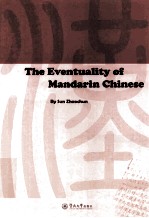

汉语事件结构研究 英文PDF电子书下载
- 电子书积分:9 积分如何计算积分?
- 作 者:孙肇春著
- 出 版 社:广州:暨南大学出版社
- 出版年份:2013
- ISBN:9787566805898
- 页数:178 页
Introduction 1
Chapter One Approaches to Eventuality:A Review 4
Introduction 4
1.1 Vendlerian Aspectual Classification of Verbs 4
1.1.1 General Introduction to Vendler's Aspectual Classes of Verbs 5
1.1.2 States 9
1.1.3 Activities 10
1.1.4 Accomplishments 11
1.1.5 Achievements 12
1.1.6 Summary 14
1.2 Lexical Decompositional Approach to Eventuality 16
1.2.1 Generative Semantic Approach 16
1.2.2 Categorical Approach 17
1.2.3 Lexical Syntactic Approach 18
1.2.4 Syntactic Approach 21
1.2.4.1 Huang(1991,1997) 21
1.2.4.2 Lin(2001) 22
1.2.4.3 Comments on Huang(1991,1997)and Lin(2001) 26
1.3 Chomskyan Light Verb 29
1.3.1 Origin of the Chomskyan Light Verb 30
1.3.2 Development of the Chomskyan Light Verb 31
1.3.3 Some Semantically-Richer Light Verbs 33
1.3.3.1 Bowers'(1993)Pr 33
1.3.3.2 Kratzer's(1996)Voice 34
1.4 Summary 35
Chapter Two Eventuality and Lexical Aspect in MC 36
Introduction 36
2.1 Eventuality and Aspectual Classes of Verbs in MC 36
2.1.1 Previous Studies on Eventuality in MC 37
2.1.1.1 Early Period 37
2.1.1.2 Modern Period 37
2.1.1.3 Summary 38
2.1.2 Aspectual Classes of Verbs in MC 38
2.1.2.1 Previous Studies 38
2.1.2.2 Classification 39
2.1.2.3 Event Structure of Verbs 40
2.1.2.4 Summary 45
2.2 Eventuality of State in MC 45
2.2.1 Stative Adiectives in MC 45
2.2.1.1 Properties of Adjectives in MC 45
2.2.1.2 Gradable Adjectives 49
2.2.1.3 Non-gradable Adjectives 50
2.2.1.4 Contrast Between Gradable and Non-gradable Adjectives 51
2.2.1.5 Event Structure of Stative Adjectives 52
2.2.1.6 Summary 52
2.2.2 Stative Verbs in MC 52
2.2.2.1 Classification of Verbs in MC—Previous Studies 53
2.2.2.2 Properties of Stative Verbs in MC 56
2.2.2.3 Event Structure of Stative Verbs 58
2.2.2.4 Unaccusative Verbs 60
2.3 Eventuality of Activity in MC 63
2.3.1 Properties of Activity in MC 63
2.3.2 Event Structure of Activity 65
2.3.3 Summary 68
2.4 Conclusion 68
Chapter Three Eventuality of Achievement in Mandarin Chinese 69
Introduction 69
3.1 Previous Studies on Achievement in MC 69
3.2 Verbs of Achievement in English and MC—A Comparison 71
3.3 Achievement or Accomplishment? 73
3.3.1 Achievement vs.Accomplishment in English 74
3.3.2 Achievement vs.Accomplishment in MC 77
3.4 Achievement and Aspect Markers 79
3.4.1 Achievement and Aspect Marker le 80
3.4.1.1 Introduction to Aspect Marker le 80
3.4.1.2 Deriving Achievement with le 83
3.4.1.3 Summary 84
3.4.2 Achievement and Aspect Marker dao 84
3.4.2.1 Introduction to Aspect Marker dao 84
3.4.2.2 Deriving Achievement with dao 85
3.4.2.3 Interaction Between dao and Other Aspect Markers 86
3.4.2.4 Summary 91
3.4.3 Achievement and Aspect Marker zhao 91
3.4.3.1 Introduction to Aspect Marker zhao 91
3.4.3.2 Deriving Achievement with zhao 92
3.4.3.3 Interaction Between zhao and Other Aspect Markers 93
3.4.3.4 Summary 95
3.4.4 Achievement and Aspect Marker qilai 95
3.4.4.1 Introduction to Aspect Marker qilai 95
3.4.4.2 Adjectives and qilai 97
3.4.4.3 Verbs and qilai 102
3.5 Conclusion 109
Chapter Four Eventuality of Accomplishment in Mandarin Chinese 110
Introduction 110
4.1 Accomplishment and Aspect Markers 110
4.1.1 Previous Studies on Accomplishment and Aspect Markers 111
4.1.2 Aceomplishment and le 113
4.1.3 Accomplishment and Other Aspect Markers 117
4.1.4 Summary 118
4.2 Accomplishment and Resultative Verbal Constructions(RVCs)in MC 118
4.2.1 Classification of RVCs 118
4.2.2 Types of Literal RVCs 122
4.2.3 Types of English Resultative Constructions 124
4.2.4 Event Structure of RVCs 127
4.2.4.1 Previous Studies on the Derivation of RVCs 127
4.2.4.2 Accomplishment Event Structure Approach—Our Proposal 135
4.2.4.3 Ambiguity of Accomplishments 147
4.2.4.4 Accomplishment Event Structure Approach to DE Constructions 154
4.2.4.5 Accomplishment Event Structure of ERCs 156
4.3 Conclusion 160
Chapter Five Concluding Remarks 161
Appendix:List of Abbreviations 163
Bibliography 165
Acknowledgements 177
- 《红色旅游的社会效应研究》吴春焕著 2019
- 《汉语词汇知识与习得研究》邢红兵主编 2019
- 《生物质甘油共气化制氢基础研究》赵丽霞 2019
- 《东北民歌文化研究及艺术探析》(中国)杨清波 2019
- 《联吡啶基钌光敏染料的结构与性能的理论研究》李明霞 2019
- 《异质性条件下技术创新最优市场结构研究 以中国高技术产业为例》千慧雄 2019
- 《《国语》和《战国策》词汇比较研究》陈长书著 2017
- 《中国制造业绿色供应链发展研究报告》中国电子信息产业发展研究院 2019
- 《行政保留研究》门中敬著 2019
- 《新课标背景下英语教学理论与教学活动研究》应丽君 2018
- 《与缪斯对话》王美春著 2009
- 《古欢 黄易与乾嘉金石时尚》薛龙春著 2019
- 《人生峡谷》刘源春著 2000
- 《北大荒文物的诉说》赵国春著 2019
- 《古图考证发现 古图地理研究专集》刘家信,刘东春著 2017
- 《数学课堂教学新思维》王红平,侯艳春著 2019
- 《您养我长大 我陪您慢慢变老》杨梅春著 2018
- 《大京班 涅槃重生 下》罗怡春著 2019
- 《企业和公司法》史际春著 2013
- 《时空坐标、形成路径与奠定 构筑中国疆域的文明板块研究》于逢春著 2012
